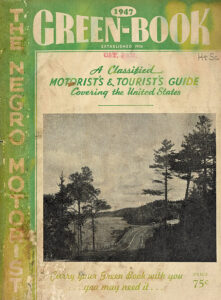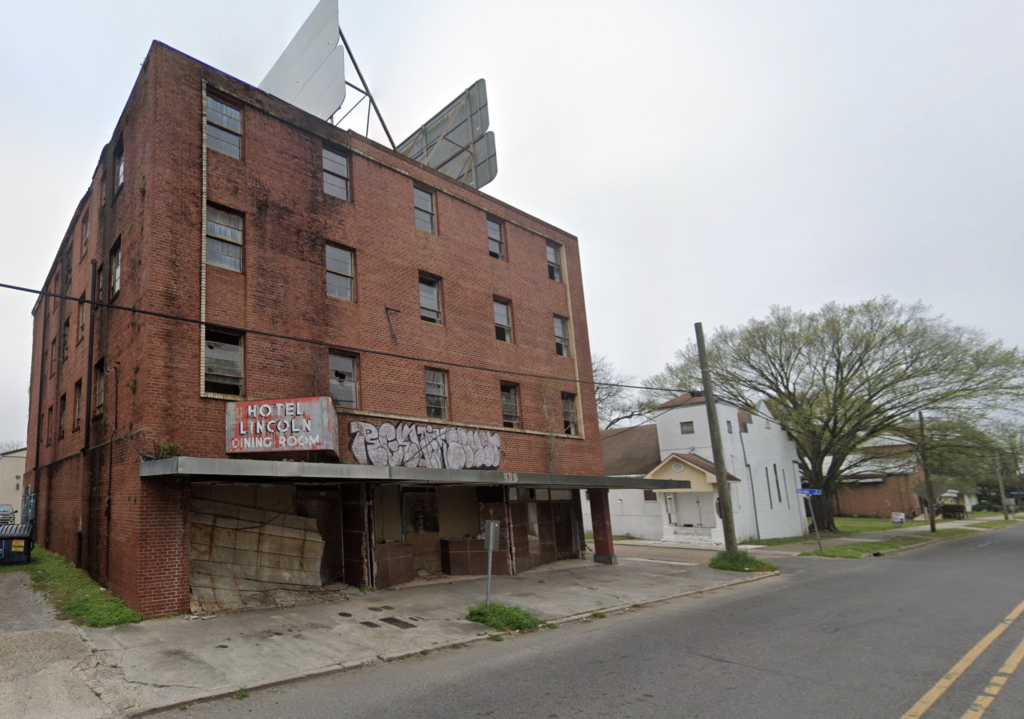
‘Green Book’ exhibition shows struggles Black families faced when traveling under Jim Crow—and the local places that helped them
That may just be a chauffeur’s cap sitting in a display inside the Capitol Park Museum. But it has a dark and dangerous story to tell.
It’s a story of traveling in disguise and thwarting mobs in sundown towns. Of the risks Black families endured just to hop in the car for a road trip.
For Black Americans in the mid- 20th century, that chauffeur’s cap could save their lives.

It’s part of a traveling Smithsonian Institution exhibition on view starting Aug. 21 at the Capitol Park Museum about The Negro Motorist Green Book. Published in the 1930s-1960s, the small guidebook sought to help Black families navigate the road during Jim Crow.
These newly middle class families were just starting to purchase cars, and often looking to migrate to bigger cities. But they still faced discrimination, the refusal of a decent meal or lodging in unfamiliar towns, or outright arrest by rural police forces for arbitrary reasons.
The Green Book was a resource highlighting businesses, gas stations and restaurants that were willing to serve Black people. It warned of those “sundown towns” where non-whites would likely be arrested—or worse—if they were present after dark.
Many families had developed their own strategies for navigating these dangers, such as that curious chauffeur’s cap. In the event of a traffic stop, the patriarch of the family would quickly slip on the cap and tell the police officer they were just on their way to pick up their boss—thwarting any unfounded suspicions they might be driving a stolen automobile.
“We don’t often get exhibitions this large, and this one is so powerful,” says Rodneyna Hart, museum division director for the Louisiana State Museum, which includes Capitol Park Museum among its nine facilities. “I’m excited that people can have important conversations around history and culture with this exhibition, and that the museum can facilitate that conversation.”
While organized through the Smithsonian Institution Traveling Exhibition Service, the local leg of its tour highlights several Louisiana businesses featured in the Green Book, such as Dookie Chase’s Restaurant in New Orleans and the Hotel Lincoln on 13th Street in Baton Rouge, which provided lodging for some iconic Black performers and touring jazz and blues musicians.

Hart says while the Green Book featured more than 70,000 small Black-owned businesses during its decades of publication, many of those businesses or physical buildings no longer exist, such as a gas station in Scotlandville that was one of the first owned by a Black person.
Part of the reason such historic places are now lost to time is because preservationists overlooked Black landmarks in years past, Hart says. “It’s only now that people are starting to even include racial diversity in the types of businesses they are trying to preserve.”
Even artifacts and images related to the still-standing Hotel Lincoln are hard to come by. The Capitol Park Museum worked with the East Baton Rouge Parish Library to find images related to the hotel, but they were only able to come up with a small advertisement in a 1958 city directory, which called it “The House of Hospitality and Courteous Service.”
And so, exhibitions like this one seek to shine a light on those remaining artifacts that tell the story of the Green Book and the challenges of traveling while Black.
“I want people to look at an object in this exhibition and understand that there was a person connected to this—that they are the story the (artifacts) represent,” Hart says. “I hope that people can really spend some time with the exhibition and soak it all in.”
“The Negro Motorist Green Book” is on view at the Capitol Park Museum Aug. 21-Nov. 14. Find out more information at louisianastatemuseum.org and track upcoming events tied to the exhibit, such as documentary screenings, on the Capitol Park Museum’s Facebook page.
|
|
|

